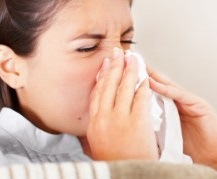
Is it a Cold, Flu, or Sick Building Syndrome?
Across the Northern Hemisphere, the winter months are un-affectionately known as Cold and Flu Season. Along with our hats, scarves and winter coats, the winter months may also bring out a whole slew of other unwanted heath symptoms such as coughing, runny nose, sinus infections and feelings of fatigue, tiredness and general unwell. Is it a cold? Maybe the flu? Or, could it be exposure to an unhealthy indoor environment?
Sick building syndrome, also known as SBS, is a general term used to describe situations in which building occupants (residential and commercial), exhibit acute health and comfort related symptoms that appear to be linked to the amount of time spent in a specific indoor environment. When indoors within a sick building, occupants can start to feel quite ill, have repeated cold/flu related symptoms that don’t seem to want to go away, or keep returning over and over. These symptoms appear to be alleviated or go away whenever extended periods are spent away from the building in question.
Symptoms related to an unhealthy indoor environment can severely impact our productivity, functioning and bottom line, particularly within office or workplace environments. By creating homes and offices with better indoor air, everyone wins from building occupants who can feel significant health improvements, right to businesses that can see improvement in their bottom line through reduced employee sick days, lower attrition rates and increased productivity amongst employees.
But how do you know for sure? Is it a cold, flu, or hidden airborne contaminants? If you or a family member is exhibiting any of the following symptoms that seem to worsen when indoors within your home or workplace, SBS may be the culprit:

The symptoms of Sick Building Syndrome noted above can appear by themselves or in combination with each other and their severity can change from day to day. Additionally, each building occupant may exhibit a different type or grouping of symptoms. If you suspect SBS may be impacting your home or office, professional environmental consultants and air quality testing professionals can help! A thorough indoor assessment can find the contaminants that may be impacting your health and welfare and offer recommendations on how to restore your indoor space back to a safe, clean and healthy setting. If professional testing is performed and the results show an uncontaminated environment, you may consider boosting your vitamin C intake and speak to a medical professional for health testing and symptom relief.
(Visited 467 times, 1 visits today)







